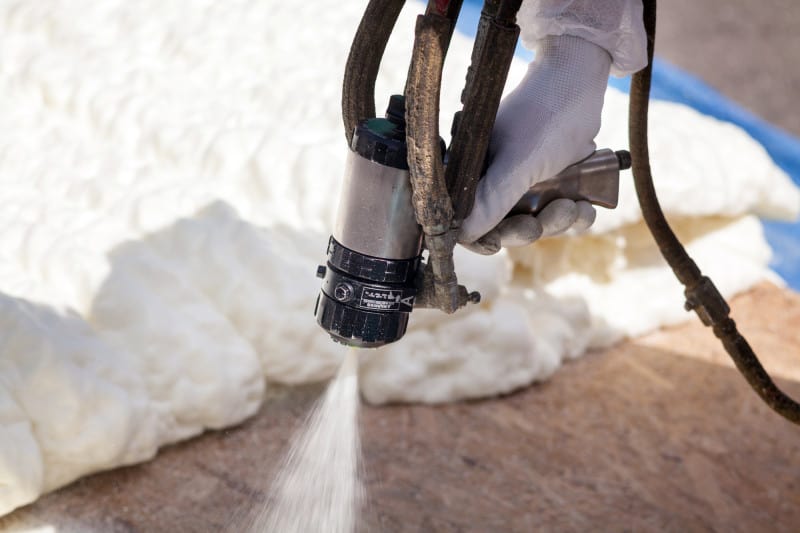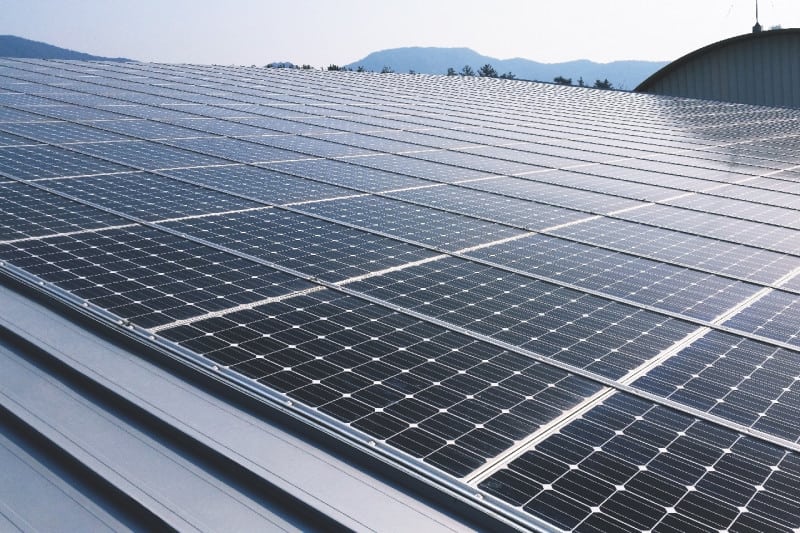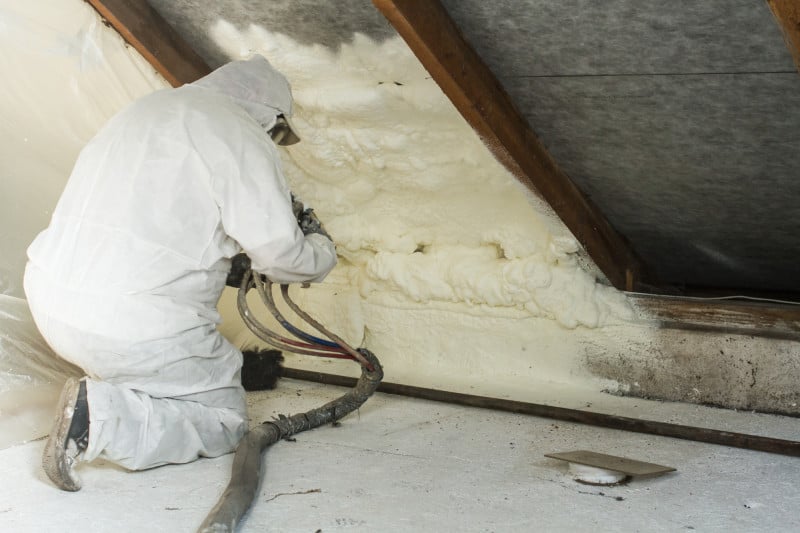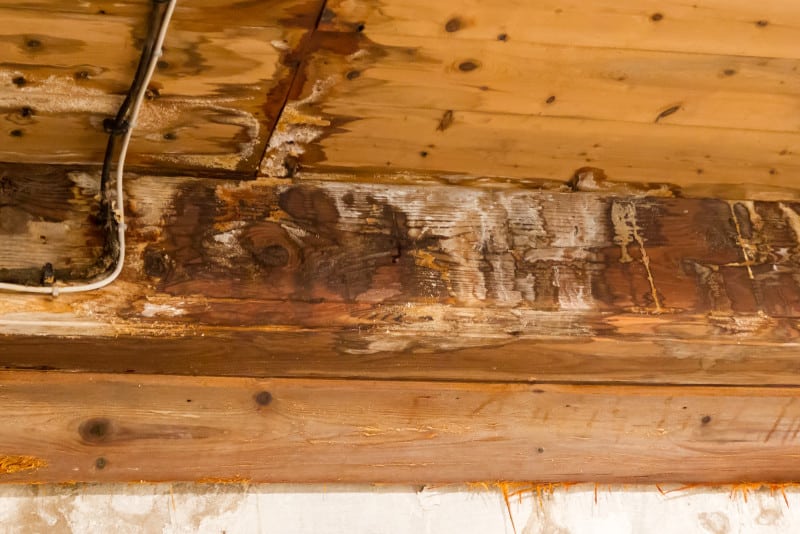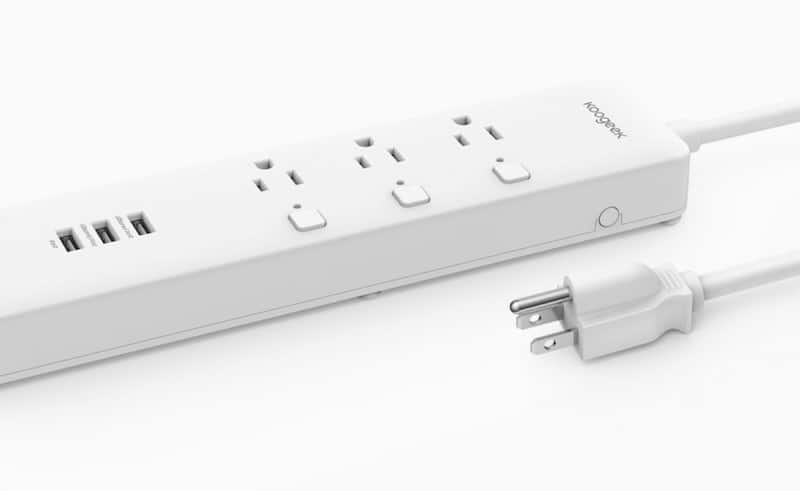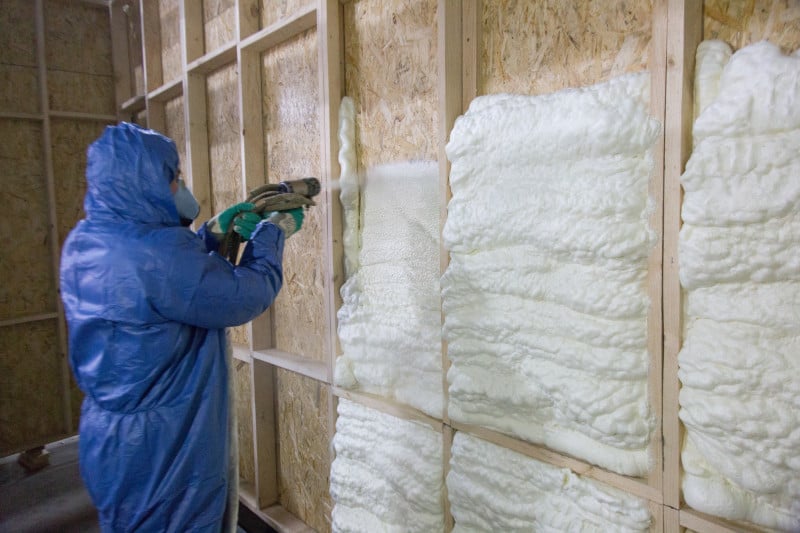As the old adage goes, ‘you get what you pay for.’
When it comes to insulation, this rings especially true.
Spray foam insulation may cost more upfront, but its longevity and efficiency make it a worthwhile investment.
But just how long does spray foam last?
The answer isn’t as straightforward as you may think, as there are several factors that can affect its lifespan, but it’s very durable and can last over 80 years if installed and maintained properly.
Peeling back the layers of this enigma, let’s delve into the dynamic world of spray foam longevity.
We’ll tackle key elements such as material type, installation process, maintenance, and the overall environment, all crucial determinants of its lifespan.
Understanding the Lifespan of Spray Foam
Spray foam’s lifespan depends on various factors, but on average, it can last up to 50 years with proper maintenance.
The installation process is crucial in ensuring that the foam lasts as long as possible. The steps involve cleaning the surface, applying a primer, and then spraying the foam.
The requirements include the use of protective gear such as gloves and masks, as well as ensuring that the area is well-ventilated.
Spray foam is also known for its environmental impact. It’s a sustainable product that can reduce energy consumption, which translates to lower carbon emissions.
However, it’s important to note that the manufacturing process of spray foam can be energy-intensive.
Therefore, it’s essential to work with a manufacturer who uses sustainable methods and materials.
Cost effectiveness is another factor to consider when evaluating the lifespan of spray foam.
Although the initial investment may be higher than other insulation options, the long-term savings are significant.
Spray foam can reduce energy bills by up to 50%, making it a wise investment for homeowners and businesses alike.
The durability of spray foam means that it won’t need to be replaced as often as other insulation products, further reducing long-term costs.
Spray foam is a durable insulation product that can last up to 50 years with proper maintenance.
The installation process, environmental impact, cost effectiveness, health and safety, and performance in extreme conditions are all factors to consider when evaluating the lifespan of spray foam.
It’s an excellent choice for those looking for a sustainable, energy-efficient, and long-lasting insulation option.
Maintaining and Protecting Spray Foam: Tips for Prolonging its Lifespan
By taking care of it properly, you can ensure that your investment in spray foam insulation is protected and lasts for years to come, like a cherished heirloom passed down through generations.
With that in mind, it’s important to understand the steps you can take to maintain and protect your spray foam insulation.
One of the most important preventative measures you can take is to keep your foam insulation clean. This means vacuuming it regularly and wiping it down with a damp cloth as needed.
It’s important to keep moisture levels under control. This can be achieved by using a dehumidifier in areas with high humidity or installing proper ventilation in areas prone to moisture buildup.
Another key factor in maintaining the longevity of your spray foam insulation is to protect it from UV rays. This can be achieved by applying a protective coating to the foam, which will shield it from the sun’s harmful rays.
It’s also important to have your spray foam insulation professionally maintained on a regular basis.
This can include having it inspected for damage, repaired if necessary, and resealed to ensure ongoing protection against moisture and other environmental factors.
By following these tips and taking the necessary steps to maintain and protect your spray foam insulation, you can ensure that it will continue to provide optimal performance and energy efficiency for many years to come.
How to Identify When Spray Foam Needs Attention
It’s crucial to stay vigilant for any signs of wear and tear in your insulation, so you can identify when it needs attention and keep your home protected.
Insulation effectiveness is important for keeping your home energy-efficient and comfortable.
If your spray foam insulation is starting to show signs of wear and tear, it may not be performing as well as it should.
One sign of wear and tear is moisture damage. If you notice any discoloration or staining on your walls or ceilings, it could be a sign of moisture damage.
This can happen when spray foam insulation is damaged or not installed properly. Moisture can seep in and cause the insulation to deteriorate, which can lead to more serious problems like mold growth.
Another sign to look out for is cracking. Over time, spray foam insulation can shrink and crack, which can compromise its effectiveness.
If you notice any cracks or gaps in your insulation, it’s important to have them repaired as soon as possible to prevent energy loss and potential pest infestation.
Pests like rodents and insects can easily get through small cracks in your insulation and make their way into your home.
By staying vigilant and addressing any signs of wear and tear, you can keep your spray foam insulation performing at its best and protect your home from potential problems.
Replacing or Repairing Aging Spray Foam
When your insulation starts to show its age, you might want to consider bringing in a professional to assess the situation and help you decide the best course of action.
Depending on the severity of the wear and tear, you may have the option to repair or replace the aging spray foam.
A professional can help you make this decision by conducting a cost analysis and weighing the environmental impact and safety considerations of each option.
If the damage to your spray foam insulation is minimal, repairing it may be the more cost-effective option.
However, if the damage is extensive, it may be more practical to replace the insulation altogether.
There are safety considerations to take into account when dealing with spray foam insulation.
Hiring a professional to handle the job can ensure that the repair or replacement is done safely and effectively.
It’s important to weigh the costs and benefits of each option before making a decision.
While DIY repairs or replacements may seem like a cheaper alternative, they can often lead to costly mistakes and may not be as effective as a professional job.
Ultimately, the decision to repair or replace aging spray foam insulation should be based on a thorough assessment of the situation, taking into account factors such as cost, environmental impact, safety considerations, and the expertise of professionals in the field.
Spray Foam vs. Other Insulation Materials
Comparing the lifespan of spray foam insulation to other materials reveals some surprising differences.
For instance, fiberglass insulation has a lifespan of roughly 10-15 years, while spray foam insulation typically lasts for over 50 years.
This means that fiberglass insulation will require replacement or repair multiple times during the lifespan of a building, while spray foam insulation will not.
Although the initial cost of spray foam insulation is higher than fiberglass insulation, the long-term cost savings make it a more cost-effective choice.
Another important factor to consider when comparing insulation materials is their environmental impact.
While fiberglass insulation is made from a renewable resource (sand), the manufacturing process is energy-intensive and produces significant amounts of waste.
On the other hand, spray foam insulation is made from renewable and recycled materials and has a lower environmental impact.
Spray foam insulation is more energy-efficient than fiberglass insulation, which can lead to further environmental benefits.
There are also many myths surrounding spray foam insulation, such as the belief that it can cause indoor air quality issues or that it is not safe to use.
However, these myths have been debunked by numerous studies and industry experts.
In fact, spray foam insulation can improve indoor air quality by reducing the infiltration of outside contaminants and pollutants.
Overall, when considering the longevity, cost, environmental impact, and energy efficiency of insulation materials, spray foam insulation emerges as the clear winner.
Conclusion
Spray foam insulation proves to be a sound long-term investment.
Despite the higher upfront costs, its durability, energy efficiency, and low environmental impact make it a compelling choice over traditional insulation materials like fiberglass.
Its lifespan can extend up to 50 years, or even more with proper maintenance, thereby reducing the need for frequent replacements and contributing to significant long-term savings.
The maintenance of spray foam involves regular cleaning, moisture control, UV protection, and routine professional inspections.
Awareness of signs of wear and tear such as moisture damage or cracks can aid in timely intervention, thus ensuring the insulation’s optimal performance.
When necessary, a professional can help decide whether to repair or replace the aging spray foam, considering various factors like cost, environmental impact, and safety.
The comparison of spray foam insulation with other materials further emphasizes its advantages in terms of longevity, cost-effectiveness, and environmental impact.
Thus, spray foam insulation is a remarkable solution for those seeking a sustainable, energy-efficient, and enduring insulation alternative.

